Rank Species | Genus Pyrrharctia Higher classification Pyrrharctia | |
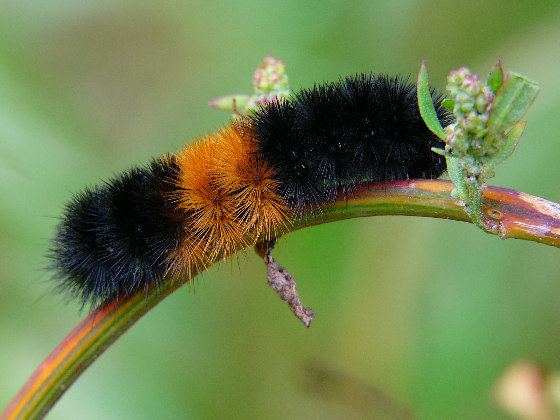 | ||
Similar Insect, Arctiinae, Butterflies and moths, Garden tiger moth, Heteroneura | ||
Pyrrharctia isabella
Pyrrharctia isabella (Isabella tiger moth) can be found in many cold regions, including the Arctic. The banded woolly bear larva emerges from the egg in the fall and overwinters in its caterpillar form, when it freezes solid. It survives being frozen by producing a cryoprotectant in its tissues. In the spring it thaws out and emerges to pupate. Once it emerges from its pupa as a moth it has only days to find a mate.
Contents
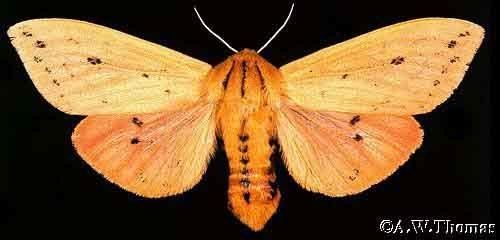
In most temperate climates, caterpillars become moths within months of hatching, but in the Arctic the summer period for vegetative growth – and hence feeding – is so short that the Woolly Bear must feed for several summers, freezing again each winter before finally pupating. Some are known to live through as many as 14 winters.
Pyrrharctia isabella
Appearance
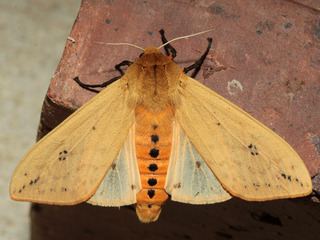
The larva is black at both ends, with or without a band of coppery red in the middle. The adult moth is dull yellow to orange with a robust, furry thorax and small head. Its wings have sparse black spotting and the proximal segments on its first pair of legs are bright reddish-orange.
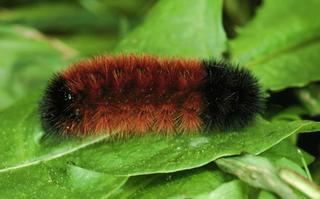
The setae of the Woolly Bear caterpillar do not inject venom and are not urticant – they do not typically cause irritation, injury, inflammation, or swelling. Handling them is discouraged, however, as the bristles may cause dermatitis in people with sensitive skin. Their main defense mechanism is rolling up into a ball if picked up or disturbed.
Diet
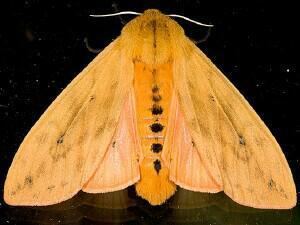
This species is a generalist feeder – it feeds on many different species of plants, especially herbs and forbs.
Related Species
Research has shown that the larvae of a related moth Grammia incorrupta (whose larvae are also called "woollybears") consume alkaloid-laden leaves that help fight off internal parasitic fly larvae. This phenomenon is said to be "the first clear demonstration of self-medication among insects".
Folklore
Folklore of the eastern United States and Canada holds that the relative amounts of brown and black on the skin of a Woolly Bear caterpillar (commonly abundant in the fall) are an indication of the severity of the coming winter. It is believed that if a Woolly Bear caterpillar's brown stripe is thick, the winter weather will be mild and if the brown stripe is narrow, the winter will be severe. In reality, hatchlings from the same clutch of eggs can display considerable variation in their color distribution, and the brown band tends to grow with age; if there is any truth to the tale, it is highly speculative.
Woollybear Festivals
Woolleybear Festivals are held in several locations in the fall.
